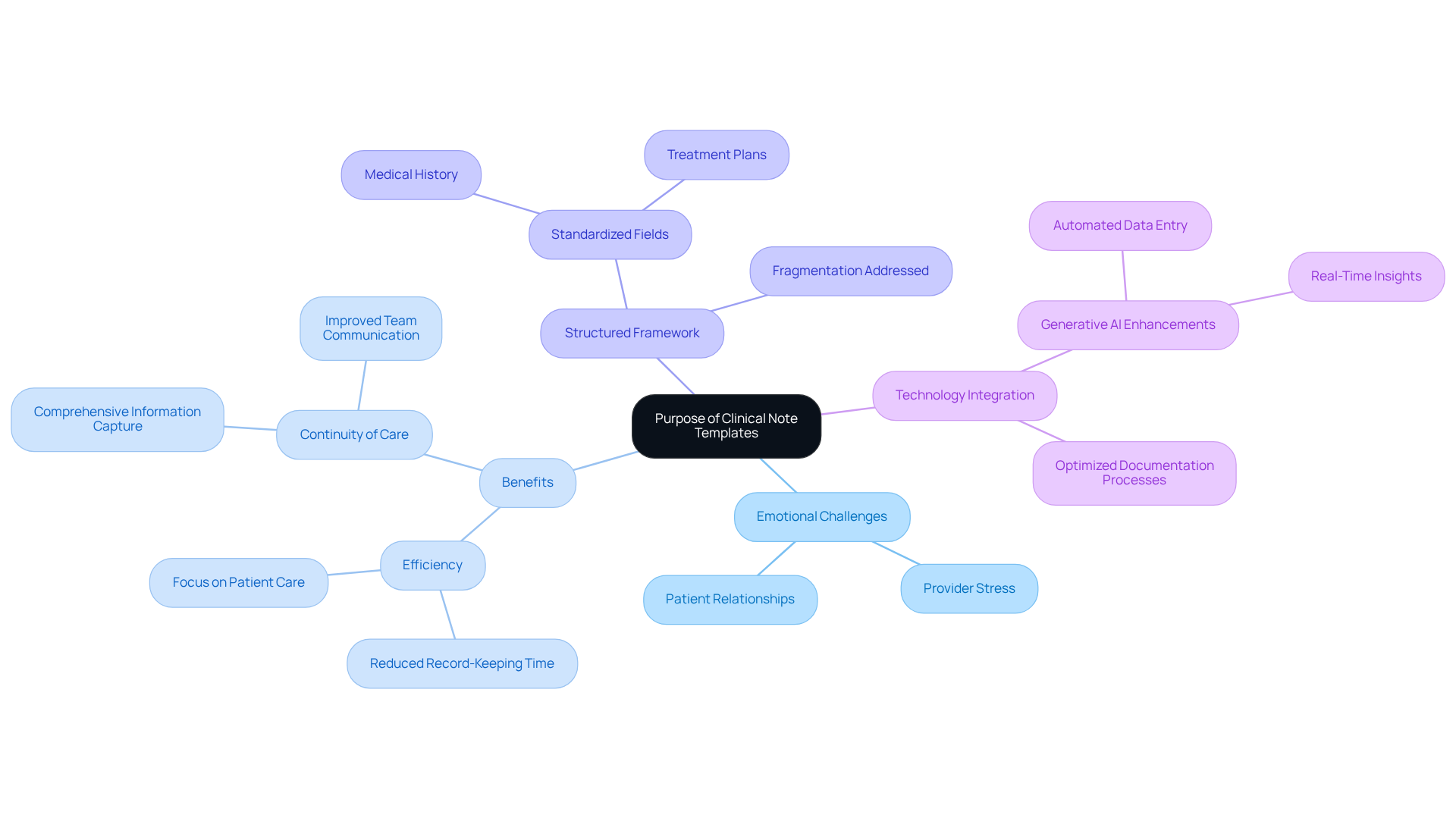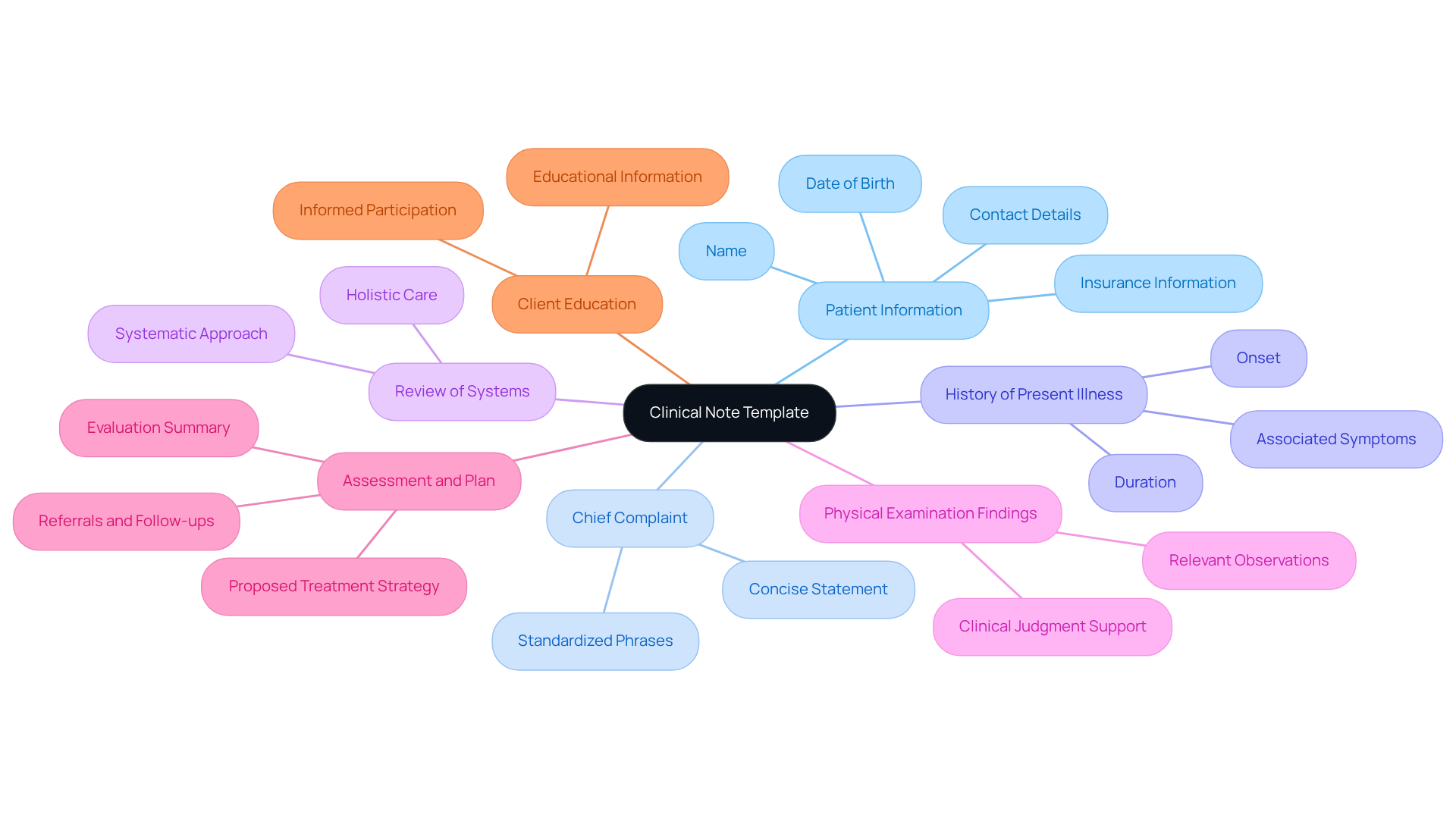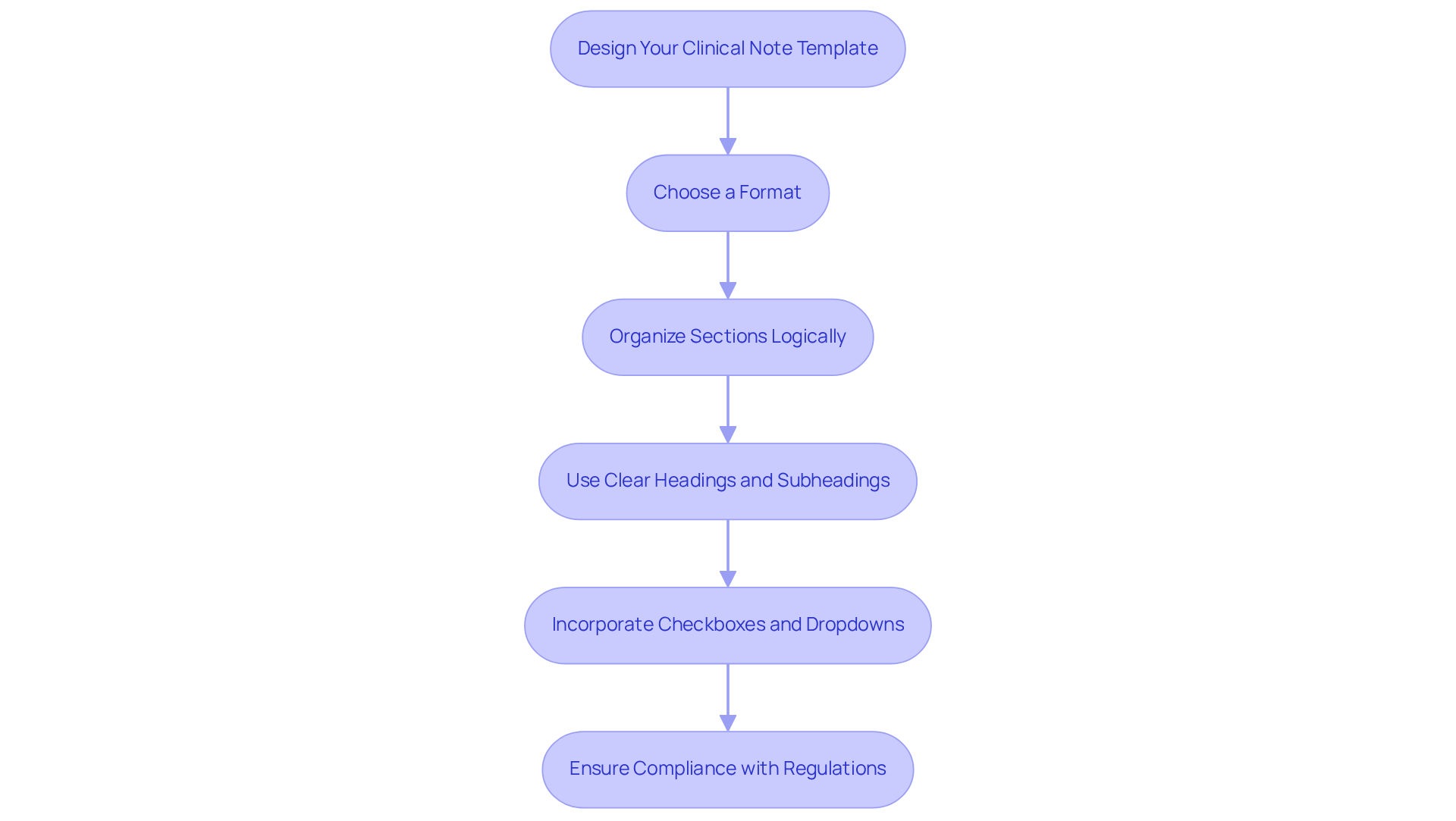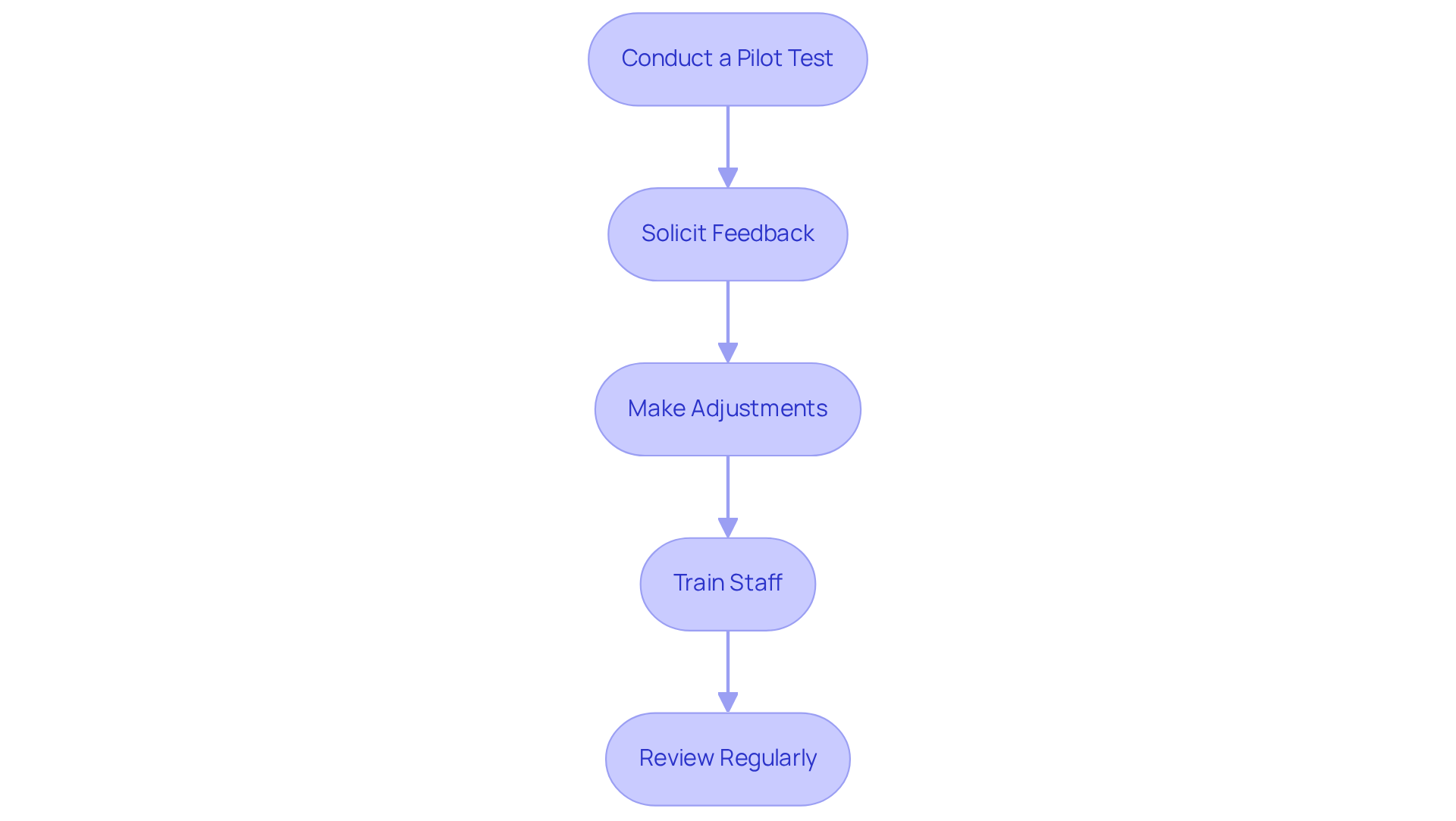Overview
This article addresses the emotional challenges that healthcare providers face in their daily practice. It highlights the importance of creating an effective clinic note template that not only enhances patient care but also streamlines documentation processes. By focusing on key components like patient information and treatment plans, we can alleviate some of the administrative burdens that often detract from meaningful patient interactions.
Moreover, the role of generative AI is crucial in this context. Automating tasks improves efficiency and accuracy, allowing healthcare providers to dedicate more time to what truly matters—their patients. Imagine a scenario where documentation becomes seamless, enabling you to engage more deeply with those you care for.
As we navigate the complexities of healthcare, it's vital to consider how these solutions can transform our practices. By adopting a thoughtful approach to clinic note templates, we can foster a more compassionate environment for both providers and patients. Let's embrace these innovations together, ensuring that our focus remains on delivering exceptional care.
Introduction
Creating a clinic note template goes beyond a mere procedural task; it is a crucial step in enhancing patient care within our healthcare system. As healthcare providers face increasing demands, an effective template can significantly streamline documentation. This ensures that vital information is consistently captured and communicated. Yet, this raises an important question: how can providers navigate the complexities of thorough documentation while nurturing genuine connections with their patients? This guide explores the essential components and best practices for designing a clinic note template that not only fulfills regulatory requirements but also enriches the provider-patient relationship.
Understand the Purpose of Clinical Note Templates
Healthcare providers often face emotional challenges in their demanding roles. Clinic note templates serve as organized structures that help them consistently and thoroughly record interactions with individuals. These formats ensure that all essential information is captured, which is vital for continuity of support, legal adherence, and effective communication among team members.
By utilizing a structured framework, providers can significantly reduce the time spent on record-keeping. This allows them to focus more on what truly matters: connecting with and . The distinct features of these formats, such as standardized fields for medical history and treatment plans, directly address the fragmentation often seen in healthcare systems. Disconnected communication can jeopardize safety and continuity of service, which is a concern for both providers and patients alike.
Furthermore, the integration of generative AI with these frameworks can enhance their efficiency. By automating data entry and providing real-time insights, documentation processes become even more optimized. This reduction in administrative burdens not only improves communication but ultimately elevates the quality of care for individuals.
Imagine a world where healthcare providers can spend less time on paperwork and more time nurturing their relationships with patients. The use of a clinic note template is a step toward making that vision a reality. Let’s continue to explore how these tools can support your practice and improve patient care together.

Identify Key Components for Your Template
When developing your clinical note template, it is essential to consider the following components that can truly make a difference in patient care:
- Patient Information: Ensure you include the patient's name, date of birth, contact details, and insurance information. This not only aids in accurate identification and billing but also fosters a sense of trust. Generative AI can assist by automatically populating this information from existing records, reducing manual entry errors.
- Chief Complaint: Utilize a clinic note template to document a concise statement that reflects the primary reason for the individual's visit. This sets the context for the encounter and shows that you value their concerns. AI tools can help by suggesting standardized phrases based on previous visits, ensuring consistency and clarity.
- History of Present Illness: Utilize a clinic note template to provide a thorough account of the individual's current condition, detailing the onset, duration, and associated symptoms. This crucial information informs clinical decision-making and demonstrates your commitment to their well-being. AI can analyze past notes to highlight relevant information, aiding in comprehensive documentation.
- Review of Systems: Utilize a systematic approach to gather information about other body systems that may be affected. This enhances your overall understanding of the individual's health and shows your dedication to holistic care. AI can prompt clinicians with questions based on the individual's history, ensuring no critical areas are overlooked.
- Physical Examination Findings: The clinic note template should be used to record relevant observations from the physical examination, which are critical for assessing the patient's condition. This not only supports your clinical judgment but also reassures patients that their health is in capable hands. AI can assist by providing templates or checklists tailored to specific conditions, streamlining the documentation process.
- Assessment and Plan: Summarize your evaluation and outline the proposed treatment strategy in the clinic note template, which should include referrals or follow-up appointments. This ensures continuity of service and shows your commitment to their ongoing care. AI can recommend evidence-supported treatment alternatives based on the individual's information, improving the quality of service.
- Client Education: Note any educational information given to the individual regarding their condition or treatment options. This reinforces the significance of informed participation in their care and empowers them in their health journey. AI can create customized educational resources based on the individual's specific needs and conditions.
Integrating generative AI into the record-keeping process can greatly enhance efficiency. It allows healthcare providers to automate repetitive tasks like appointment scheduling and record management. This not only simplifies administrative processes but also ensures that vital elements of patient care records are consistently addressed. Remember, records are akin to insurance; they cannot be created retroactively after an incident. As Stuart Rudner, an employment attorney, stresses, "record-keeping is essential" in establishing a strong legal stance. Additionally, Brett Shavers, a digital forensics expert, emphasizes, "if you didn't record it, it didn't happen," highlighting the potential repercussions of insufficient record-keeping. Many healthcare providers may overlook these essential components due to a lack of understanding of their value, which underscores the necessity of timely and accurate documentation. How can we ensure that we prioritize these components in our practice? Your commitment to can truly enhance the quality of care you provide.

Design Your Clinical Note Template
Designing your clinic note template can feel overwhelming, but with a thoughtful approach, you can create a tool that truly supports your practice. Here are some steps to guide you:
- Choose a Format: Consider whether your design will be digital, utilizing an EHR system, or paper-based. Digital templates can enhance your workflow by offering features like drop-down menus and checkboxes, making your documentation process smoother.
- Organize Sections Logically: Think about the natural flow of a client visit. Starting with client information, followed by the chief complaint, and then the assessment and plan can help you stay focused and attentive during consultations.
- Use Clear Headings and Subheadings: Clearly labeling each section allows for quick navigation during patient visits, ensuring that you can provide the best care without unnecessary delays.
- Incorporate Checkboxes and Dropdowns: If you opt for digital forms, using checkboxes for common symptoms or dropdown menus for standardized responses can significantly streamline your data entry, allowing you to concentrate more on your patients.
- Ensure Compliance with Regulations: It’s essential to verify that your document meets any relevant legal and regulatory requirements for documentation in your practice area, ensuring both your peace of mind and your patients’ safety.
By following these steps, you can create a clinic note template that not only meets your needs but also enhances the quality of care you provide. Remember, a well-organized template can , allowing you to focus more on what truly matters—your patients.

Test and Refine Your Template for Practical Use
Once your clinic note template is designed, it’s essential to test it in a real-world setting to ensure it meets the needs of both providers and patients.
- Conduct a Pilot Test: Invite a few providers to use the document during patient visits. Gather their feedback on usability and functionality—this step is crucial for understanding their experiences.
- Solicit Feedback: Ask for input on what works well and what could be improved. Are there any sections that feel cumbersome or unclear? Listening to their insights can guide you toward a more effective clinic note template.
- Make Adjustments: Based on the feedback, refine the clinic note template to address any issues. This might involve reorganizing sections, adding new components, or simplifying language to enhance clarity.
- Train Staff: Once the outline is finalized, provide training for all staff members on how to use it effectively. Emphasize the importance of thorough and accurate documentation, as this directly impacts patient care.
- Review Regularly: Periodically review the template to ensure it remains relevant and effective as clinical practices and regulations evolve. This ongoing commitment to improvement reflects a and support for your team.

Conclusion
Creating an effective clinic note template is essential for healthcare providers who genuinely care about enhancing patient care while navigating their administrative responsibilities. Have you ever felt overwhelmed by the documentation that takes time away from your patients? By employing a structured approach, you can streamline these processes, ensuring that critical information is consistently recorded and easily accessible. This not only fosters improved communication among team members but also reinforces the overall quality of care delivered to patients.
Throughout this article, we’ve outlined key components of a successful clinic note template, including:
- Patient information
- Chief complaints
- Assessments
Imagine the relief of having generative AI automate data entry and enhance the accuracy of your documentation. Testing and refining your template based on real-world feedback ensures its practicality and effectiveness, allowing you to focus more on meaningful patient interactions rather than paperwork.
Ultimately, adopting a well-designed clinic note template signifies your commitment to quality care and efficient practice management. By prioritizing thorough documentation and continuous improvement, you can create a supportive environment that not only meets regulatory requirements but also enhances patient trust and satisfaction. How transformative would it be to dedicate more time to what truly matters—your patients? Embracing these practices can lead to a significant shift in how care is delivered, ensuring that both you and your patients thrive.




